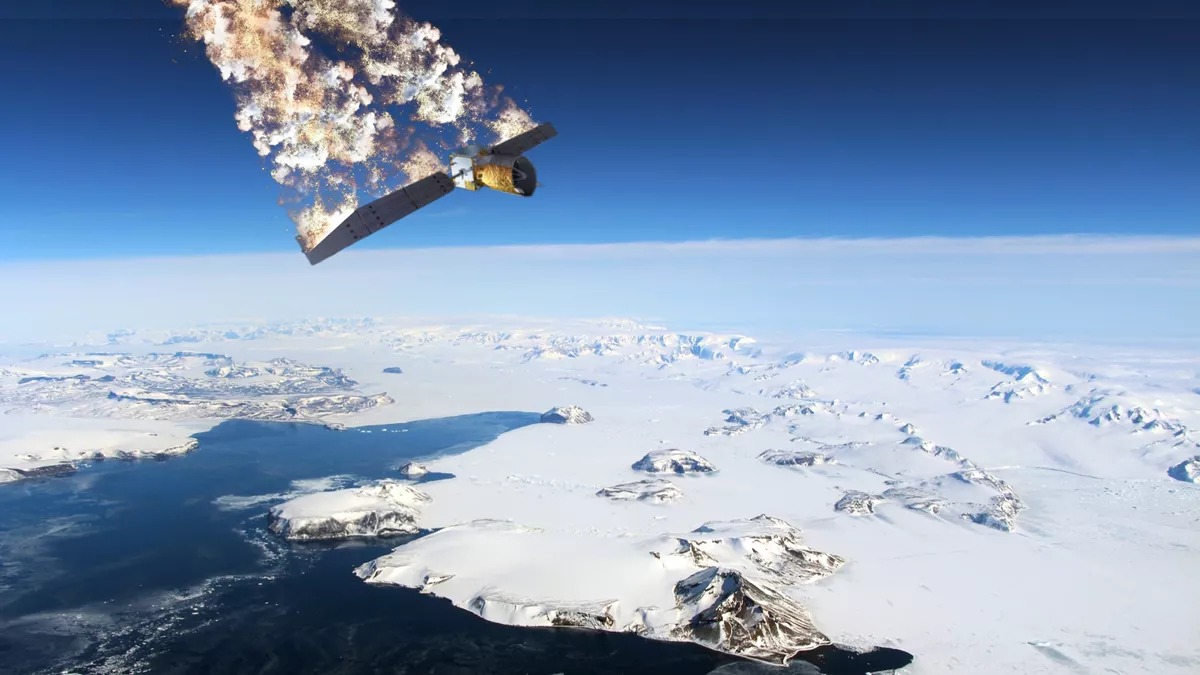Recently, the European Space Agency (ESA) released impressive photos showing the dramatic moment when their Aeolus satellite was ablaze, plunging into the dense layers of the Earth’s atmosphere at a speed of 27,000 km/h. This event opened a new section in space research and allowed studying aspects of controlled entry into the atmosphere.

Aeolus was launched into space in 2018 and was the first satellite with powerful laser technology that made it possible to observe the global climate on Earth. During its 5-year mission, the satellite has made a significant contribution to improving weather forecasts and climate models. However, in July of this year, the Aeolus satellite went into retirement, turning into space debris.
Based on NASA data, we can understand that satellites after decommissioning usually go out of orbit, plunge into the earth’s atmosphere, and burn up, which is a common practice in space. And that’s exactly what happened with Aeolus, but with certain innovative elements.

ESA used the “death” of the Aeolus mission as an opportunity to test a “controlled entry into the atmosphere”, a maneuver that helped reduce the risk of an uncontrolled fall of the satellite and its objects. This maneuver included a series of decelerations, during which the satellite gradually approached the Earth, but remained in orbit, which made it possible to accurately determine the place of entry of the satellite into the atmosphere. All this contributed to the fact that the satellite debris burned over deserted areas, and did not land in populated areas.
According to calculations, Aeolus was supposed to completely burn up over Antarctica. As a result of the fall, 80% of the satellite burned down, and only 20% survived entering the atmosphere.
Controlled way to destroy satellites
This operation taught us how to implement a controlled method of destroying failing satellites and thus reduce the risk of collision with other objects in orbit. In a world where the number of active satellites in orbit is growing rapidly (according to data for 2022, there were more than 6,000 active satellites), controlled destruction is becoming an increasingly important task.
At the same time, our planet is becoming more vulnerable to the dangers associated with space debris, as the risk of objects colliding in orbit increases with the number of satellites. Although space debris does not cause serious harm yet, it is a potentially dangerous problem. Now everything possible is being done to reduce the risk of collision and ensure the safety of space missions.
Given these factors, ESA notes the importance of improving the safety of space missions and creating effective methods for removing satellites that fail.
According to sciencealert.com
Follow us on Twitter to get the most interesting space news in time
https://twitter.com/ust_magazine

